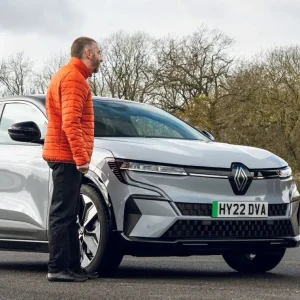Adrian Bewley, head of business mobility at Enterprise Rent-A-Car, discusses why drilling down into the detail and mapping out your requirements is how to make the most of mobility options…
Ten – or even five – years ago, the current business mobility market hardly existed. There was fleet management, leasing and daily rental, often segmented into very different markets.
That landscape has radically changed. Suppliers are creating joined-up services and providing analytics and technology tools to enable businesses to reassess how they keep employees moving. This is giving rise to new, more creative solutions that are often accessible online, showing real-time and on-demand availability.
Suppliers are offering a wealth of new options and services to meet business needs. Car clubs provide vehicles flexibly at the roadside in one-hour increments; mobile apps enable user choice; long-term rental provides indefinite flexibility; and integrated mobility suites enable businesses to hand-pick the right option for the journey, including public transport.
Everyone from HRs and sustainability heads to transport and travel managers are excited by the potential of these offerings. Yet all too often, the stumbling block is that the process for selecting mobility partners hasn’t necessarily evolved at the same pace.
If companies have to reap the benefits of mobility, then they’ll need a fresh approach. And a good place to start is with a geography lesson.
Many businesses know that thousands of pounds were billed in rentals to a particular cost centre, but not the specific wheres, whens and whys of those expenditures. What was the vehicle? How long was it used for? What distance did it travel? How many people were in the car? How often does that employee need a vehicle?
In today’s more complex and dynamic market, drilling down into the detail and literally physically mapping out your requirements is how to make the most of mobility options.
For example, the North West region might be billing for hundreds of rental days, but how is that split between the offices in Manchester, Wigan and Liverpool? What types of journeys are the people at each location making and how long do they need vehicles for? Bearing all that in mind, should cars be based on-site or is the nearest rental branch sufficient?
And it’s not just your offices and depots that you need to consider. Do any of your people work from home? Where do they live? Is there a branch close by that they can use for business trips?
Only when you have a clear picture of exactly where you need mobility can you fully understand which providers best suit your needs. Map their branches to your needs and make sure the two fit together.
If it turns out a fifth of your rentals come from your Luton office, you want to be certain your preferred supplier has a rental site nearby. If the closest branch is actually fifteen miles away, that could lead to delays in getting the vehicles you need as well as hidden additional fuel costs for delivery and collection. That can turn what initially looked like the cheapest supplier into a far more expensive option.
The key to these choices comes from the flexibility of your supplier to adapt to different and changing circumstances. Having the ability to shift based on customer requirements is of paramount importance.



